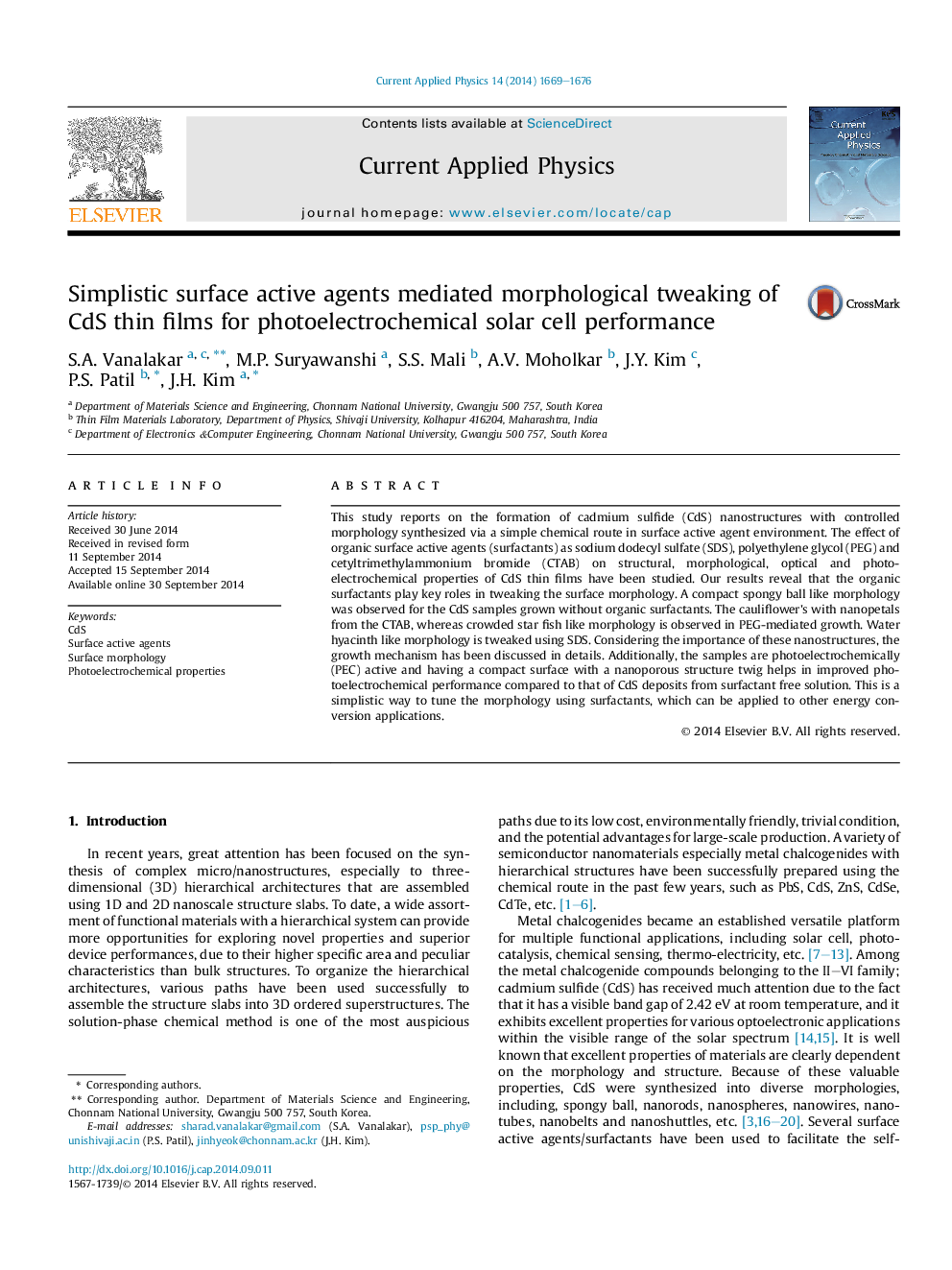| کد مقاله | کد نشریه | سال انتشار | مقاله انگلیسی | نسخه تمام متن |
|---|---|---|---|---|
| 1785904 | 1023399 | 2014 | 8 صفحه PDF | دانلود رایگان |

• Nanostructured CdS thin films were fabricated by means of a simple chemical route in surface active agent environment.
• The organic surfactants play key roles in tweaking the surface morphology.
• To the best of our knowledge, such structure of CdS has rarely been reported.
• Surfactant mediated growth is a simplistic way to tune the morphology.
This study reports on the formation of cadmium sulfide (CdS) nanostructures with controlled morphology synthesized via a simple chemical route in surface active agent environment. The effect of organic surface active agents (surfactants) as sodium dodecyl sulfate (SDS), polyethylene glycol (PEG) and cetyltrimethylammonium bromide (CTAB) on structural, morphological, optical and photoelectrochemical properties of CdS thin films have been studied. Our results reveal that the organic surfactants play key roles in tweaking the surface morphology. A compact spongy ball like morphology was observed for the CdS samples grown without organic surfactants. The cauliflower's with nanopetals from the CTAB, whereas crowded star fish like morphology is observed in PEG-mediated growth. Water hyacinth like morphology is tweaked using SDS. Considering the importance of these nanostructures, the growth mechanism has been discussed in details. Additionally, the samples are photoelectrochemically (PEC) active and having a compact surface with a nanoporous structure twig helps in improved photoelectrochemical performance compared to that of CdS deposits from surfactant free solution. This is a simplistic way to tune the morphology using surfactants, which can be applied to other energy conversion applications.
Figure optionsDownload as PowerPoint slide
Journal: Current Applied Physics - Volume 14, Issue 12, December 2014, Pages 1669–1676